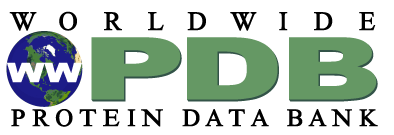Crystal Structure of Human Riboflavin Kinase Reveals a Beta Barrel Fold and a Novel Active Site Arch
Karthikeyan, S., Zhou, Q., Mseeh, F., Grishin, N.V., Osterman, A.L., Zhang, H.(2003) Structure 11: 265-273
- PubMed: 12623014
- DOI: https://doi.org/10.1016/s0969-2126(03)00024-8
- Primary Citation of Related Structures:
1NB0, 1NB9, 1P4M - PubMed Abstract:
Riboflavin kinase (RFK) is an essential enzyme catalyzing the phosphorylation of riboflavin (vitamin B(2)) to form FMN, an obligatory step in vitamin B(2) utilization and flavin cofactor synthesis. The structure of human RFK revealed a six-stranded antiparallel beta barrel core structurally similar to the riboflavin synthase/ferredoxin reductase FAD binding domain fold. The binding site of an intrinsically bound MgADP defines a novel nucleotide binding motif that encompasses a loop, a 3(10) helix, and a reverse turn followed by a short beta strand. This active site loop forms an arch with ATP and riboflavin binding at the opposite side and the phosphoryl transfer appears to occur through the hole underneath the arch. The invariant residues Asn36 and Glu86 are implicated in the catalysis.
Organizational Affiliation:
Department of Biochemistry, University of Texas Southwestern Medical Center, Dallas, TX 75390, USA.

















